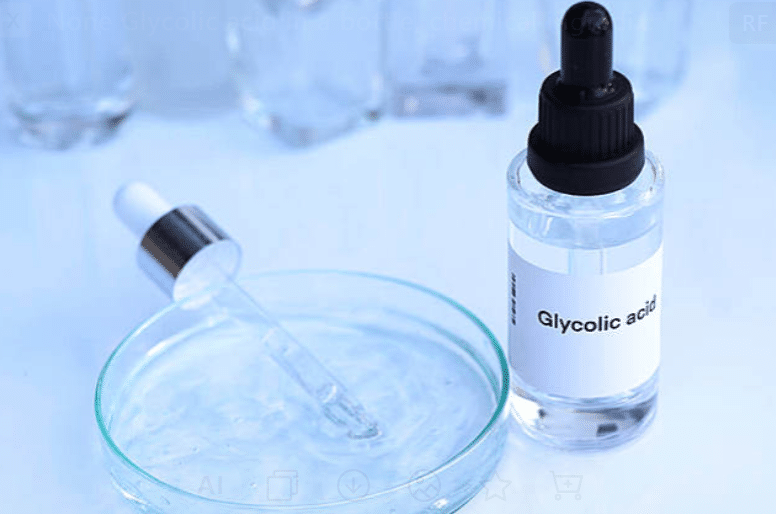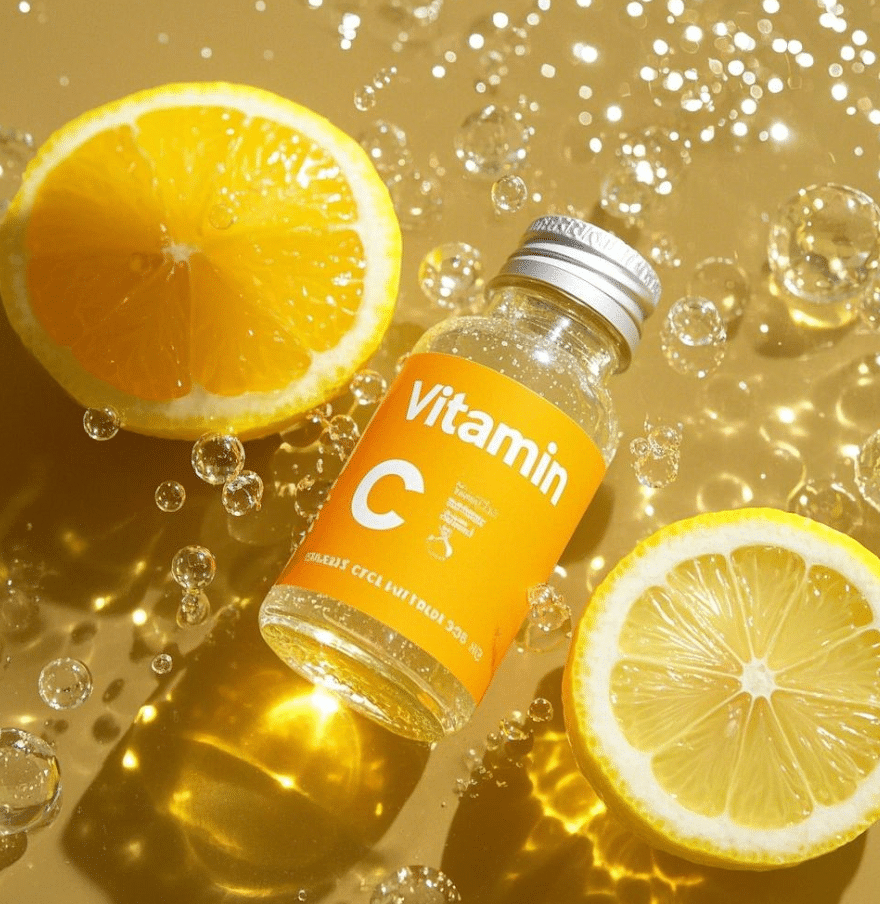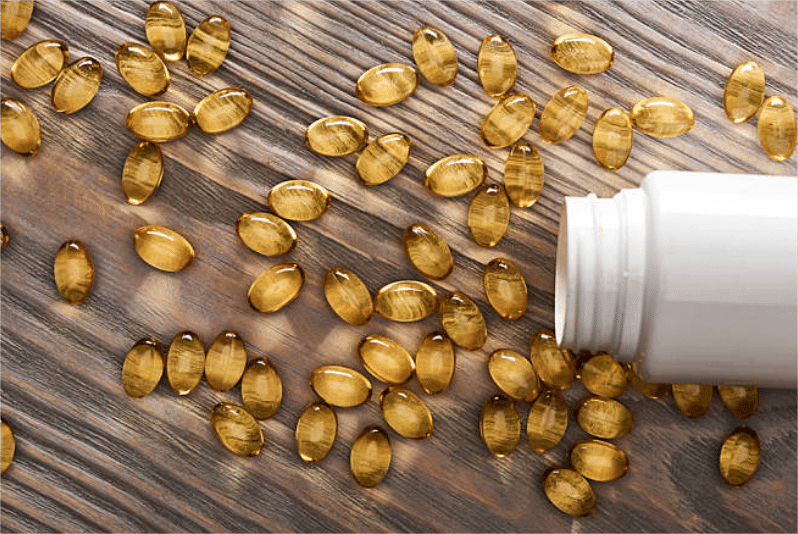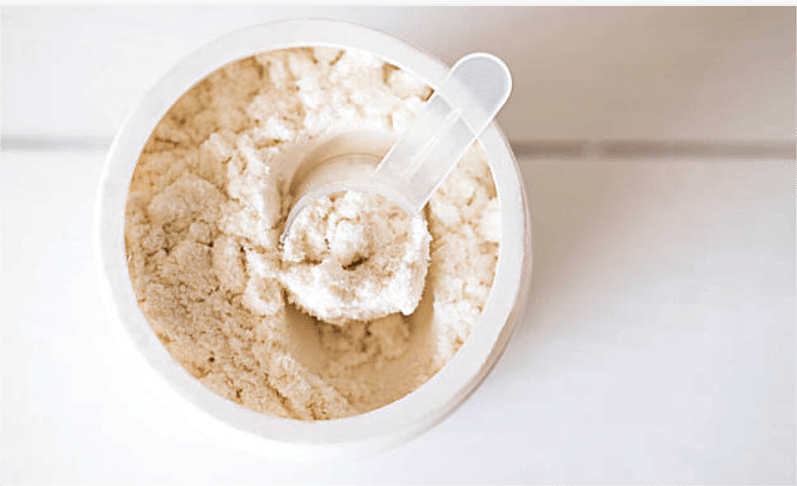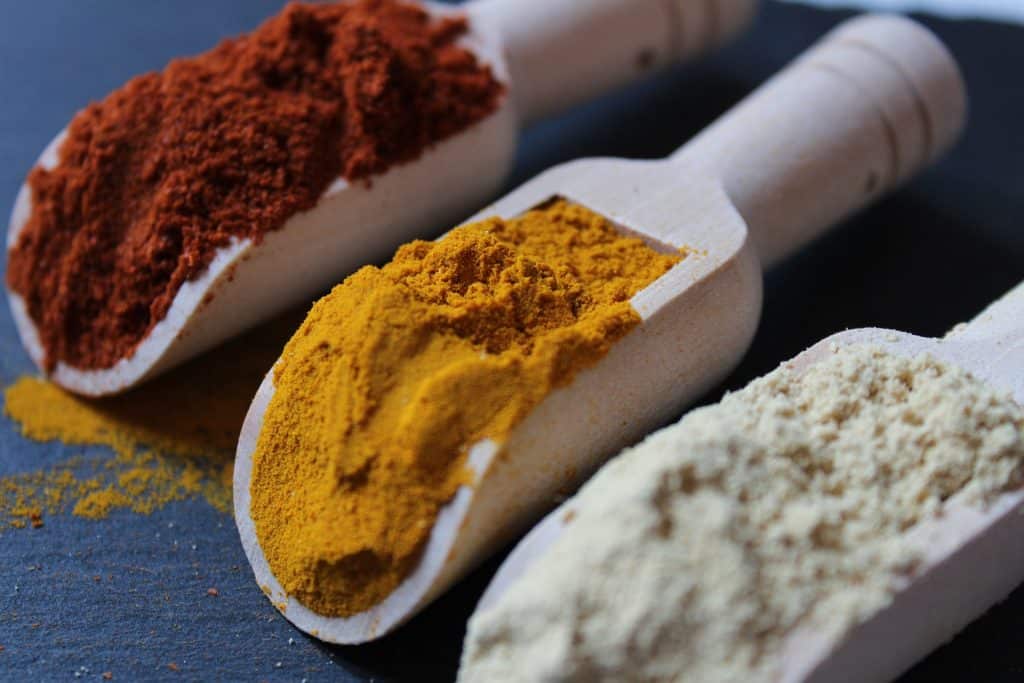Glycolic Acid and Vitamin C: The Dynamic Duo of Skincare Ingredients
What is Glycolic Acid and Vitamin C? Hey there, skincare enthusiasts and beauty industry moguls! 👋 Ready to dive into the fascinating world of glycolic acid and vitamin C? Buckle up, because we’re about to take you on a wild ride through the land of exfoliation and antioxidants. Whether you’re a brand owner, ingredient supplier, or just a curious skincare junkie, this guide’s got all the juicy details you need. Let’s get this glow party started! ✨
The Basics: Meet Our Star Players
First things first, let’s break down the 411 on these powerhouse ingredients:
Glycolic Acid: The Exfoliation Sensation
- Aliases: Hydroxyacetic acid, The Glow Getter
- Latin Name: Acidum glycolicum
- CAS Number: 79-14-1
- Production Standard: USP, EP
- Appearance: Colorless, odorless crystals or liquid
- Taste: Slightly sweet (but please don’t eat it!)
- Common Forms: Liquid solutions, creams, peels
Vitamin C: The Brightening Superhero
- Aliases: Ascorbic acid, The Radiance Booster
- Latin Name: Acidum ascorbicum
- CAS Number: 50-81-7
- Production Standard: USP, EP, BP
- Appearance: White to light yellow crystalline powder
- Taste: Slightly sour
- Common Forms: Powders, serums, creams, vitamin c drinks
The Origin Story: From Lab to Fab
Glycolic acid was first isolated from sugarcane in the 1800s, but it wasn’t until the 1970s that dermatologists started using it for skin treatments. Talk about a glow-up! 💅
Vitamin C, on the other hand, has been known since the 1930s when it was isolated to prevent scurvy. But its skincare superstardom didn’t take off until the 1980s when researchers discovered its antioxidant properties. Who knew pirates and beauty gurus had so much in common?
Shape-Shifting Superpowers: Forms and Formulations
Both glycolic acid and vitamin C are like the chameleons of the skincare world, coming in various forms to suit different needs:
Glycolic Acid:
- Liquid solutions (perfect for toners)
- Creams and lotions
- Chemical peels (for when you really want to get your glow on)
- Cleansers (hello, vitamin c face wash!)
Vitamin C:
- L-Ascorbic Acid (the OG form)
- Vitamin C derivatives (like the fancy tetrahexyldecyl ascorbate vitamin c)
- Serums and oils
- Powders (mix-it-yourself for maximum freshness)
The Secret Sauce: What’s Inside?
When it comes to production, both glycolic acid and vitamin C often need some sidekicks to make them stable and effective:
Glycolic Acid:
- pH adjusters (to keep it at the right acidity)
- Humectants (to prevent dryness)
- Preservatives (because nobody likes a funky face cream)
Vitamin C:
- Stabilizers (to keep it fresh and potent)
- Antioxidants (teamwork makes the dream work!)
- Emollients (for that silky-smooth feel)
Water, Water Everywhere: Solubility Showdown
Here’s where things get interesting:
- Glycolic Acid: Highly water-soluble (it loves to mingle!)
- Vitamin C: Water-soluble in its pure form, but some derivatives are oil-soluble (looking at you, tetrahexyldecyl ascorbate!)
Where’s the Party At? Applications Galore
Both of these skincare superstars are pretty popular in various industries:
Glycolic Acid:
- Anti-aging products
- Acne treatments
- Body care (bye-bye, rough elbows!)
- Hair care (for when your scalp needs some TLC)
Vitamin C:
- Brightening serums
- Sun protection boosters
- Anti-pollution skincare
- Vitamin c cream for all-over glow
How It’s Made: Production Processes Unveiled
Alright, let’s get a bit nerdy (but in a cool way, promise!):
Glycolic Acid:
- Synthesized from chloroacetic acid and sodium hydroxide
- Purification through distillation
- Quality control and testing
- Formulation into various products
Vitamin C:
- Fermentation of glucose (thanks, microorganisms!)
- Chemical synthesis (for some forms)
- Extraction and purification
- Stabilization and formulation
It’s like a high-tech cooking show, but for skincare!
Superhero Powers: Benefits and Effects
Now for the part you’ve all been waiting for – what can these bad boys do for your skin?
Glycolic Acid:
- Exfoliates dead skin cells (goodbye, dullness!)
- Improves skin texture and tone
- Helps with acne and clogged pores
- Boosts hydration (surprise!)
- Enhances penetration of other skincare products
Vitamin C:
- Powerful antioxidant protection
- Brightens and evens skin tone
- Boosts collagen production (hello, plump skin!)
- Helps fade dark spots and hyperpigmentation
- Enhances sun protection when used with SPF
The Dark Side: Potential Side Effects
Even superheroes have their kryptonite:
Glycolic Acid:
- Can cause irritation, especially at high concentrations
- Increases sun sensitivity
- Not suitable for very sensitive skin types
Vitamin C:
- Can be unstable and oxidize easily
- May cause irritation in some people
- Can be expensive, especially in its pure form
Remember, folks: patch test is your best friend!
The Science Behind the Magic
Let’s get our geek on for a moment:
Glycolic Acid:
- Smallest alpha-hydroxy acid (AHA) molecule
- Penetrates skin easily due to its size
- Breaks down bonds between dead skin cells
Vitamin C:
- Potent antioxidant that neutralizes free radicals
- Inhibits melanin production for brighter skin
- Essential for collagen synthesis
It’s like they’re the backstage crew making sure your skin looks like a superstar!
Market Madness: By the Numbers
Time for some juicy stats:
Glycolic Acid:
- Global market size: Approximately $230 million in 2020
- Projected CAGR: 7.5% from 2021 to 2028
- Key growth areas: Asia-Pacific and North America
- Molecular formula:
Vitamin C:
- Global skincare market size: Around $1.3 billion in 2020
- Projected CAGR: 6.2% from 2021 to 2028
- Fastest-growing segment: Serums and vitamin c drinks
- Molecular formula:
Legal Eagles: Regulatory Landscape
Buckle up, because this is where things get a bit… complicated:
USA:
- Glycolic Acid: Regulated as an OTC drug in certain concentrations
- Vitamin C: Generally Recognized as Safe (GRAS) status
EU:
- Glycolic Acid: Restricted to certain concentrations in leave-on products
- Vitamin C: Approved for use in cosmetics with some restrictions
Asia-Pacific:
- Varies by country, but generally allowed in cosmetics with concentration limits
Australia:
- Glycolic Acid: Regulated based on pH and concentration
- Vitamin C: Approved for use in listed medicines and cosmetics
Always check local regulations before launching your super-serum!
FAQs: What’s on Everyone’s Mind?
Are Glycolic Acid products more effective for exfoliation than Vitamin C serums?
Glycolic Acid is indeed more effective for exfoliation. It’s an alpha-hydroxy acid (AHA) that helps remove dead skin cells, while Vitamin C is primarily an antioxidant and doesn’t directly exfoliate the skin.
Are Vitamin C serums better at brightening skin tone than Glycolic Acid treatments?
Both ingredients can help brighten skin tone, but through different mechanisms. Vitamin C is particularly effective at inhibiting melanin production and fading dark spots, while Glycolic Acid brightens by removing dull, dead skin cells.
Are Glycolic Acid treatments more likely to cause irritation than Vitamin C serums?
Glycolic Acid, especially in higher concentrations, is more likely to cause irritation for some people. Vitamin C can also cause irritation, but it’s generally considered less irritating than Glycolic Acid.
Are Vitamin C products more unstable and prone to oxidation than Glycolic Acid formulations?
Yes, Vitamin C is notoriously unstable and prone to oxidation when exposed to air and light. Glycolic Acid is generally more stable in skincare formulations.
Are Glycolic Acid peels more commonly performed in professional settings than Vitamin C treatments?
Professional Glycolic Acid peels are indeed more common than professional Vitamin C treatments. However, both ingredients are widely available in at-home skincare products.
Are Vitamin C serums more effective for collagen production than Glycolic Acid products?
Vitamin C plays a direct role in collagen synthesis, making it more effective for this purpose. Glycolic Acid can indirectly stimulate collagen production by increasing cell turnover.
Are Glycolic Acid products more effective for treating acne than Vitamin C serums?
Glycolic Acid is generally more effective for treating acne due to its exfoliating properties and ability to unclog pores. Vitamin C can help with acne scarring but is less effective for active acne.
Are Vitamin C serums more commonly used for anti-aging purposes than Glycolic Acid treatments?
Both are popular for anti-aging, but they work differently. Vitamin C is prized for its antioxidant properties and ability to protect against free radical damage, while Glycolic Acid is valued for its exfoliating and skin-renewing effects.
Are Glycolic Acid products more likely to increase sun sensitivity than Vitamin C serums?
Glycolic Acid can increase skin’s sensitivity to the sun. In contrast, Vitamin C can actually help protect the skin from sun damage, though it’s not a substitute for sunscreen.
Are Vitamin C concentrations in skincare products typically higher than Glycolic Acid concentrations?
Not necessarily. Vitamin C is typically used in concentrations of 10-20%, while Glycolic Acid can range from 5-30% depending on the product and whether it’s for professional or at-home use.
Are Glycolic Acid treatments more effective for improving skin texture than Vitamin C serums?
Glycolic Acid is generally more effective for improving skin texture due to its exfoliating properties. It can help smooth rough patches and refine pore appearance more directly than Vitamin C.
The Good, The Bad, and The Glowy
Glycolic Acid Pros:
- Effective exfoliation for smoother skin
- Helps with various skin concerns (acne, aging, texture)
- Boosts hydration when used correctly
- Enhances efficacy of other skincare products
- Relatively stable and easy to formulate
Glycolic Acid Cons:
- Can be irritating at high concentrations
- Increases sun sensitivity
- Not suitable for all skin types
- Requires careful pH balancing in formulations
- May cause initial purging in some users
Vitamin C Pros:
- Powerful antioxidant protection
- Brightens and evens skin tone
- Boosts collagen production
- Enhances sun protection
- Available in various forms for different needs
Vitamin C Cons:
- Unstable and prone to oxidation
- Can be expensive, especially in pure form
- May cause irritation in some people
- Requires careful formulation and packaging
- Results can take time to become visible
Supplier Savvy: Choosing Your Skincare Sidekick
When picking suppliers for glycolic acid or vitamin C, keep these tips in mind:
- Look for GMP and quality certifications
- Ask for stability and efficacy studies
- Check their track record in the cosmetic industry
- Inquire about their sourcing and production methods
- Don’t be shy about requesting samples for testing
The Production Tango: From Raw Material to Radiant Skin
Glycolic Acid:
- Synthesis of raw materials
- Purification and concentration adjustment
- Quality control testing
- Formulation with other ingredients
- Packaging in air-tight, opaque containers
Vitamin C:
- Production of ascorbic acid or derivatives
- Stabilization and antioxidant addition
- Formulation with complementary ingredients
- pH adjustment for optimal stability
- Packaging in air-tight, light-resistant containers
It’s like a choreographed dance, but with lab coats instead of tutus!
The Final Showdown: Glycolic Acid vs Vitamin C
So, who wins in this skincare battle royale? Plot twist: it’s not about winning! Both glycolic acid and vitamin C are essential players in the glow game, each with their unique strengths and applications.
Glycolic acid shines in exfoliation, texture improvement, and enhancing product penetration. It’s a versatile ingredient that can be incorporated into various products, from cleansers to peels.
Vitamin C, on the other hand, is the go-to for antioxidant protection, brightening, and collagen boosting. Its diverse family of derivatives offers options for different skin types and formulation needs.
In the B2B world, the choice between glycolic acid and vitamin C (or using them together) depends on your specific product goals, target market, and formulation requirements. Many successful products even combine the two, like in vitamin c and hyaluronic acid serums, to create a synergistic effect.
Remember, in the world of skincare, it’s not about competition – it’s about finding the right balance and combination to meet your customers’ skin needs and create stand-out products.
Wrapping It Up: Your Next Move
Whether you’re team glycolic acid, team vitamin C, or riding the fence, the key is to stay informed and choose quality ingredients that align with your product vision.
And hey, if you’re in the market for top-notch glycolic acid, vitamin C, or any other skincare ingredients, why not give the awesome folks at Gensei Global Industries a shout? Drop them a line at sales@collagensei.com for all your glow-getting needs. They’ve got the certifications, the quality, and the know-how to get you sorted. Plus, with their OEM and ODM services, they can help you take your product from dream to reality faster than you can say “tetrahexyldecyl ascorbate vitamin c”!
Stay glowy, stay innovative, and keep spreading that radiance! Remember, in the world of skincare, you’re not just selling products – you’re selling confidence, one brightened face at a time. Now go out there and conquer the beauty world! ✨💪

